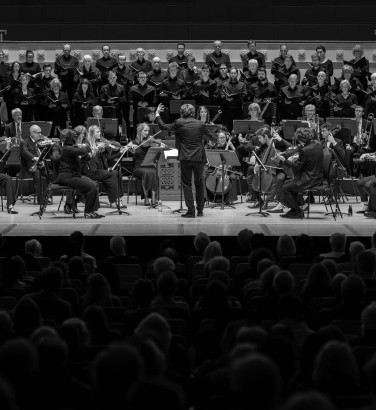
Beethoven and the Eroica theme
4 Mar 2024
News Story
Prometheus, sculpted by Nicolas-Sébastien Adam (detail)
Mention Beethoven to someone and chances are the first piece of music to come to their mind will be either the opening of the Fifth Symphony or the Ode to Joy from the Ninth. If the very beginning of the 1800s is anything to go by, however, the composer latched on to another musical idea altogether, one which has become known as the Eroica theme following its most famous use, in his symphony of the same name, No 3 in E flat.
The Eroica Symphony would be the fourth and final time Beethoven would explore this theme, marking the culmination of a five-year process. While it is not heard until the final movement (where it forms the basis for a set of variations), it has also been identified as the basis for the previous three. Despite this, however, whether this symphony is Beethoven’s most extensive exploration of the theme remains debatable.
This is largely down to the existence of his Variations and Fugue in E flat, Op 35 – variations on the same Eroica theme, only for solo piano. Beethoven wrote these in 1802, the same year as he started work on the symphony (which he would complete two years later). The Variations and Fugue are a more straightforward examination of the Eroica theme’s possibilities, and their performance takes about twice as long as the finale of the Eroica
Symphony. The latter, however, is structurally a good deal more complex (and more concise), but it would be simplistic to dismiss the Variations as a dry run for the Symphony.
That said, the piano work and its orchestral equivalent begin in very similar ways: instead of opening with a statement of the theme, Beethoven opts to look at its bassline instead for a few variations before the theme itself is introduced. (Rachmaninov would do the same thing in his Rhapsody on a Theme of Paganini in 1934.) From this point, however, the two works start to diverge. There are certainly times where they cross back over, but such is Beethoven’s mastery of his craft that there is no sense of the piano piece sounding like a wannabe orchestral work, nor does the symphony ever come across as an adaptation of keyboard music.

The title page of Beethoven's Symphony No 3 in E flat, Eroica - click here for the story behind its name ... and how this page got damaged.
It may help that the Eroica Variations are the theme’s only iteration as music for piano, serving therefore as an investigation into its possibilities for Beethoven's own instrument. He had previously incorporated it into the finale of his 1801 ballet The Creatures of Prometheus, one of three movements from the work included in our Music of the Imagination concerts in April 2024. Here, the music is a recurring theme, its orchestration very similar to how we hear it in the Eroica Symphony, only without much variation. This may explain why Beethoven wanted to see what more he could do with this music, without the restrictions of any choreographic requirements.
This may also account for the Eroica theme’s very first appearance, as No 7 in a set of 12 Contredanses (WoO 14, 1800-02) – where it really is just the theme, and even the orchestration seems a bit on the sparse side. Besides pairs of clarinets and horns, we’re down to strings only (and without violas at that), but this is fairly typical of dance bands of the period: if budgets weren’t a concern, limited stage space certainly was.
We might think it remarkable that a piece of such unassuming origins should have blossomed like this in Beethoven’s hands, but in retrospect, consider how ordinary (and similarly four-square) both the opening of the Fifth Symphony and the Ode to Joy theme are when we first hear them. The same can be said of the one Theme and Variations written before Beethoven’s day which still stands the test of time, Bach’s Goldberg Variations: it’s precisely because the composer realises the potential of relatively commonplace music that the work as a whole becomes extraordinary, an extension of the transformative process at the heart of a Theme and Variations.
Related Stories
![Three men, the first two in 18th century formal dress (one in black and white, one in a red coat), the last in an old photo, smoking]()
What is a sinfonia concertante?
17 March 2025
We delve into the history of a hybrid genre ...![]()
The SCO Chorus on music for Lent
10 March 2025
With Easter just around the corner, we delve into perhaps the richest (and often darkest) choral repertoire of all ...![]()
The bassoon concerto
3 March 2025
For the last article in our concerto series (for now), we turn to an instrument too often dismissed as the orchestra's resident joker.


